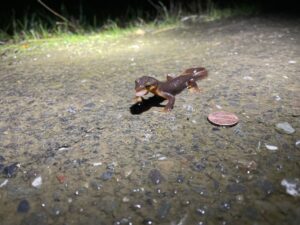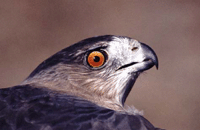At the sight of a diving juvenile Cooper’s hawk, “the squirrel reared back and opened its mouth with its paws raised in the air in a defensive pose,” notes Jim Brulet while monitoring a nest in the city of Berkeley. The ambush failed, so the young hawk resorted to pecking at something on the pavement. “They don’t know how to use their talons yet — and they’re hungry,” says Allen Fish, Director of the Golden Gate Raptor Observatory. Urban encounters with fledgling Cooper’s hawks, wild and seemingly out of place, are not so unusual anymore. Yet little is known about the birds’ nesting behavior in California. That’s why Fish and longtime GGRO volunteer Ralph Pericoli recruited a team of birders to search every tree taller than 30 feet in a 12-square-mile area of Berkeley and Albany for signs of “Coop” activity. Volunteers closely monitor nesting pairs and their hatched chicks from February to late summer, the breeding season. Most of the excitement begins in July and August, when juveniles are leaving the nest and making futile attempts to catch prey. Don’t be surprised if you witness hungry baby hawks snatching birds from your backyard bird feeders, says Fish. And with a high mortality rate in their first year, the success or failure of these efforts “could be life or death for them right there.” If you know of a local nest or would like a copy of the East Bay Cooper’s Hawk Intensive Nesting Survey 2003 Report, call (415)331-0730 or write ggro@parksconservancy.org. To volunteer in future surveys, Fish recommends starting with GGRO’s free “Hawk Talks” and banding demonstrations in the Marin Headlands on weekends in September and October. For more information, visit www.ggro.org.
Wildlife


